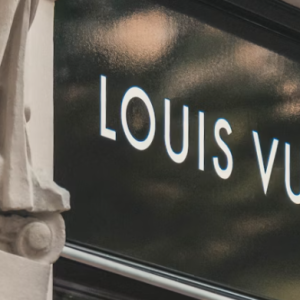Getting started as a freelance graphic designer? Congratulations! Now that you’ve built your portfolio and are putting yourself out there, you’re probably facing the most difficult question: what should you charge? Setting your freelance rates can be anxiety-inducing. And for every 10 quotes you send, there’s at least one potential client complaining about the price. Don’t let that get to you. Read our blog and learn how to set your rates to reflect your expertise and talent.
The first question most newbie graphic designers (and even some seasoned ones) have is: how much to charge? Many freelancers begin researching the issue only to find an incredible range of rates. It’s an important decision: setting your prices too low means you could be working long hours for pennies, while setting them too high could mean your ideal clients can’t afford you.
How do you strike a balance? There’s no one set formula. Instead, read on to learn how to find the best rates for your experience, skills, and target market.
Creative work deserves compensation
Ever heard people talk about starving artists? Or claim that creative fields aren’t “real jobs” and are doomed to end in poverty? When society has such negative attitudes toward artistic careers, it’s easy for aspiring designers to feel discouraged. Then, it becomes a self-fulfilling prophecy. If you believe that you can’t earn much as a graphic designer, you end up charging less.
Remember, you deserve to be paid for your work. Moreover, you offer something unique and highly marketable: your creativity. Don’t let people tell you this isn’t worth much! Many new freelancers charge the bare minimum for their services, thinking, “I don’t want to be greedy.” It’s not greedy to earn a profit — that’s the whole point of a business! So, as you set your rate following the tips below, be sure to add a profit margin.
Back up your rates with research and experience
If you’re highly experienced in graphic design, it makes sense to charge higher rates. Your expertise means that clients can expect exceptional work from you. Many people are willing to pay more for that. Research what other freelancers with comparable experience and training are charging. This way, if someone balks at your price, you can point to the market rate for someone with that level of expertise.
But even if you’re a newbie, you don’t want to set your rates absurdly low. Not only will you end up frustrated with your earnings, but you’ll also drive down the overall price for graphic design!
Consider this hypothetical: If all intermediate-level graphic designers in your area are charging, say, $40 per hour, you might attract more customers by charging only $20 per hour. But then you’ll miss out on some opportunities for clients who are willing to pay more. They may take your low rate as a sign that you’re less talented!
Meanwhile, the clients you do book will get used to paying only $20 per hour. As demand increases, more graphic designers will be forced to cut their prices to get business. That’s why it’s important to keep the current market rate in mind. With a bit of Googling, you can easily find the average rates for graphic designers with your experience, specialties, and geographic location.
Treat yourself as a business
When you work for an employer, many of your expenses are subsidized. You likely are given a computer and software, a workspace, and access to various tools and programs.
But when you’re a freelancer, none of those costs are covered. You’ll have to use your own devices, dedicate your own space and utilities to work, and purchase subscriptions and licenses to various programs. And of course, you don’t get benefits such as health insurance or paid vacation.
That’s why freelancers often charge more than the hourly rate that a regular employee with similar skills would earn. Many companies are willing to pay that higher price because they want the flexibility to hire on-demand.
Remember that when setting your prices. Your rates should cover the cost of doing business, plus a profit margin for the value of your creativity. You’re essentially running a business, and a business needs to make a profit to survive!
How to accurately calculate your freelance prices
One easy way to determine your freelance rate is to figure out how much you need to earn per month, then divide it by the number of hours you can devote to projects. For example, if you need to earn $5,000 per month and you plan to work 40 hours per week, you want to earn about $31.25 per hour.
So, you need to figure out how much you can get done in that timeframe. Remember, you’ll likely spend 40-50% of your time managing projects, finding clients, updating your website, and so on. Let’s say that you can realistically devote about 20 hours per week to billable work. Now you need to earn $62.5 per hour.
You know that each logo design project takes you about two hours. With that in mind, you should charge at least $125 per logo project. Ideally, you add more to that to cover your taxes, potential revisions, and the overall value you provide to the client.
Depending on how much time you spend searching for gigs, your overall business expenses, and your experience, you may charge less than that — or much more! Always compare your final price to the market rate for graphic designers with your skill level.
You don’t have to match it exactly, but it can be a helpful reality check. You may calculate your rate for a project, then discover that other graphic designers are charging way more! Don’t be afraid to increase your prices to this level.
However, starting from what you need to earn is a good way to make sure you’re not undercharging. Resist the temptation to charge very low prices just to get started; it often leaves you burned out as you struggle to find more work and pay your bills.
Tip: When calculating your expenses, tally the costs of everything you need for work: your computer, drawing tablet, Adobe Suite, Dropbox subscription, etc. Add in the cost of your utilities, internet, and other bills that directly contribute to your business. If you work from home, you can include a portion of your rent or mortgage as well. Then, add 20% for taxes and a 15%-20% profit margin.
Wrapping up
As you see, there’s no simple answer to the question, “How much should I charge?” The best price is one that allows you to work comfortably without pricing yourself out of the market (or dragging down the rates for everyone else). Many graphic designers undervalue their work, whether due to self-criticism or out of concern that they’ll lose clients otherwise. But the truth is, the right rate matches you with the right clients for you.
So remember to treat yourself as a business providing a valuable service. You deserve to earn a profit! And don’t forget to price projects to cover your creativity and expertise as well as your time and materials. That way, you can avoid the “starving artist” stereotype and enjoy a lucrative freelancing career.








